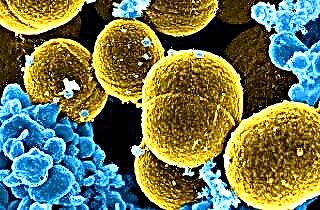Basic concepts
 There are many types of rhinitis, and most often this refers to inflammation of an infectious nature, a common (banal) infectious rhinitis, proceeding acutely, having several successive stages of development, ending in recovery and complete restoration of the function of nasal breathing. However, a runny nose can be a symptom of numerous pathologies, and the vasomotor form has significant differences from infectious inflammatory processes.
There are many types of rhinitis, and most often this refers to inflammation of an infectious nature, a common (banal) infectious rhinitis, proceeding acutely, having several successive stages of development, ending in recovery and complete restoration of the function of nasal breathing. However, a runny nose can be a symptom of numerous pathologies, and the vasomotor form has significant differences from infectious inflammatory processes.
What you need to know if a diagnosis of "vasomotor rhinitis" is established - what is it, are there separate varieties?
Under vasomotor, or vasomotor rhinitis, is meant a state of congestion, a violation of nasal breathing, which is caused by an excessive sensitivity of the mucous membrane to stimuli, that is, nasal hyperreactivity.
Contact with an irritant provokes a reaction from the vessels of the nasal cavity, as a result of which blood rushes to the nasal concha, they expand, increase in size, and interfere with breathing through the nose. For this reason, the disease is also called vascular rhinitis.
Modern classifications may seem contradictory, since the term "vasomotor rhinitis" is used both as a generalized concept and as a designation of a separate disease. In the first case, the following forms are distinguished:
- allergic;
- neurovegetative.
In the second case, this definition applies only if the patient has a neurovegetative form. Allergic rhinitis is characterized by the presence of a specific sensitivity (sensitization) to allergens, in the formation of which numerous immune mechanisms are involved. Both diseases show similar symptoms, but have different causes. Therefore, the second classification is still more convenient.
Thus, vasomotor rhinitis is not associated with infection and the formation of an infectious and inflammatory focus.
When discussing vascular rhinitis, one should not forget about the existence of special forms - in particular, rhinitis of pregnant women, which in the pathogenetic sense is nothing more than vasomotor rhinitis. The reasons for the development are not fully understood, as is the presence of a direct connection with the period of pregnancy.
Causes
 At the heart of any form of vasomotor rhinitis are vascular reactions - this is what determines the similarity of symptoms. Particular features of the development of allergic and neurovegetative rhinitis should be considered separately, but the causes of vasomotor rhinitis as manifestations of vascular disorders can be associated with:
At the heart of any form of vasomotor rhinitis are vascular reactions - this is what determines the similarity of symptoms. Particular features of the development of allergic and neurovegetative rhinitis should be considered separately, but the causes of vasomotor rhinitis as manifestations of vascular disorders can be associated with:
- With the presence of immunodeficiency.
- With frequent infections of the nasal cavity and upper respiratory tract.
- With the presence of foci of chronic infection.
- With dysfunction of the ciliated epithelium.
- With nervous strain.
- With the presence of vegetative-vascular dystonia syndrome (VVD).
- With diseases of the endocrine and digestive systems - in particular, gastroesophageal reflux disease (GERD).
All of these factors play a role in the formation of nasal hyperreactivity. Permanent damage can maintain the activity of the pathological process - for example, in the case of an allergic form, this is frequent or even constant contact with an allergen.
When studying the reasons for the development of vasomotor disorders on the part of the nasal mucosa, the dependence of symptoms on the production and activity of various hormones was clarified. In this regard, the previously mentioned rhinitis of pregnant women, rhinitis at the onset of menopause, non-infectious rhinitis during puberty and menstrual rhinitis are distinguished as separate forms.
The importance of hereditary factors cannot be ignored either. If one of the parents suffers from vasomotor rhinitis, there is a risk of developing the disease in a child, and the onset of symptoms does not necessarily occur in childhood - patients may encounter primary manifestations as adults. However, in this case, we are most often talking about allergic pathology.
Despite the existence of a voluminous list of predisposing factors, the exact causes of the onset of vascular rhinitis can not always be established - with the exception of the allergic form, the etiology of which can be proved by laboratory studies, special tests. Because of this, it is difficult to fight the disease - if the causes are not eliminated, the symptoms appear over and over again.
Allergic form
Allergy-related runny nose is an extremely common symptom. The incidence rates of allergic rhinitis are high in all age groups; the chronic course determines the need for qualified medical care throughout life. Allergic inflammation of the nasal mucosa is divided, first of all, into a seasonal and year-round form, it can be mild, moderate and severe.
The development of the disease is based on an IgE-dependent hypersensitivity reaction of the immediate type. This means that symptoms appear immediately or almost immediately after allergens get on the nasal mucosa. A prerequisite for the onset of symptoms is the presence of sensitization.
Its formation may be due to:
- burdened by heredity (the presence of allergic diseases in close relatives - as a rule, in the parents);
- unfavorable environmental conditions, living near production facilities, highways;
- frequent infectious diseases involving the respiratory system in the pathological process;
- regular contact with substances with a high allergenic potential (chemicals, industrial and household dust, mold).
Allergic rhinitis is often associated with occupational hazards (if the patient comes into contact with potential allergens at the workplace). The disease does not always proceed in isolation, combined with allergic laryngitis, tracheitis, sinusitis, bronchial asthma. Patients may also notice the phenomena of allergic conjunctivitis or dermatitis.
The cause of the occurrence of a vasomotor rhinitis of an allergic nature is sensitization to various allergens (mainly inhalation, ingested with the air).
With year-round rhinitis, dust, cosmetics, household chemicals, animal hair, and bird feathers are important. Seasonal allergic rhinitis is associated with the inhalation of pollen from flowers and trees - when flowering stops, pathological manifestations gradually disappear. The patient can be sensitive to many allergens at the same time. The presence of pronounced vasomotor reactions is explained by the fact that the nasal mucosa is equipped with a dense network of sensitive nerve endings and blood vessels.
Neurovegetative form
What is neurovegetative rhinitis? This is a disease of the nasal mucosa, the development of which is based on dysfunction of the autonomic nervous system, that is, vegetative-vascular dystonia syndrome, as well as neuroendocrine disorders. Acute respiratory viral infection (ARVI), persistence (constant presence) of viruses in the nasal cavity can act as a contributing factor.
What is the peculiarity of the disease? Patients react to stimuli that normally should not cause disturbed nasal breathing:
- cold air;

- a sharp drop in air temperature;
- pronounced smell;
- alcohol consumption;
- excess moisture;
- hot spices;
- hot drink, etc.
Symptoms are caused by the formation of inadequate and excessive pronounced susceptibility of the mucous membrane to stimuli; there is no inflammatory focus, as with an infectious rhinitis. Therefore, sometimes the disease is considered as pseudo-rhinitis, or neurovegetative rhinopathy (functional disorder). Rhinorrhea, that is, the discharge of liquid mucus from the nasal cavity, should not always be associated only with a vascular reaction. Sometimes the attachment of an infection of a viral nature is also important.
Neurovegetative rhinitis is divided as:
- Idiopathic (the true cause is unknown, the range of provocateurs is quite wide).
- Hormonal (arising from certain hormonal shifts - during pregnancy, in menopause, puberty).
- Psychogenic (developing under the influence of nervous tension, stress).
- Due to physical, chemical or mechanical factors.
- Mixed etiology.
With neurovegetative vasomotor rhinitis, there is no allergic reaction in the mechanism of development of vascular disorders.
Nasal hyperreactivity is most often nonspecific, which means that a variety of stimuli can provoke symptoms, the list of which can change during the patient's life, there are no disorders and reactions from the immune system. Triggers (trigger factors) are of a different nature - not only inhalation of a substance with a strong odor, but also mechanical action - for example, active blowing of the nose, nose injury, can cause symptoms. Emotional stress is also important.
Vasomotor rhinitis is a disease, the causes and mechanisms of development of which are still being studied. Perhaps a new classification will soon appear, it will be possible to find a medicine that completely eliminates the symptoms. To date, it is known that a vasomotor rhinitis can be caused by various factors; at the same time, it is necessary to distinguish between primary causes (for example, vegetative-vascular dystonia syndrome) and triggering factors, remember that the basis of the onset of symptoms is an overly pronounced sensitivity to stimuli and a vascular reaction.




